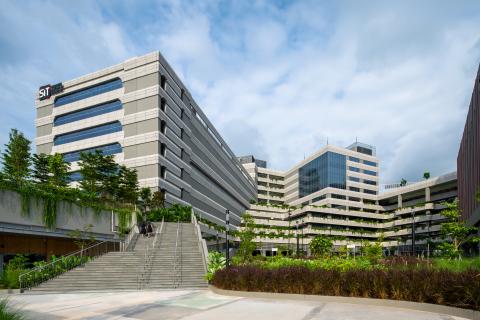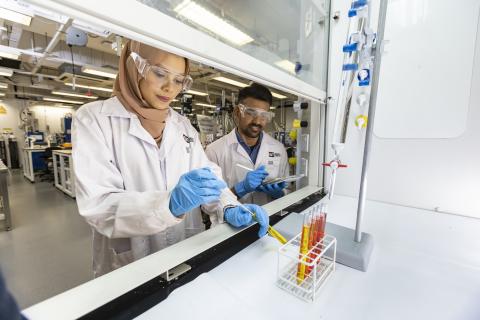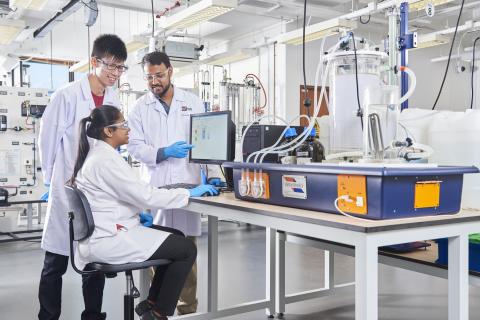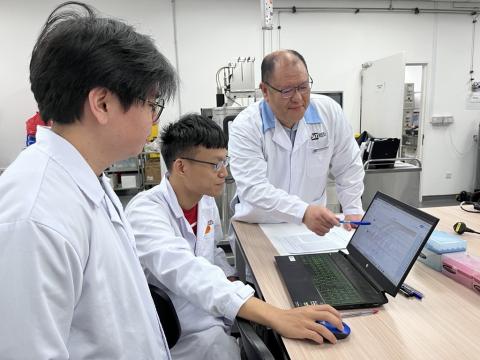Assistant Professor Dr Seck Tan from the Design and Specialised Businesses cluster of Singapore Institute of Technology (SIT) was among the panel of experts who spoke at the recent International Conference on Plastics in the Marine Environment (ICPME) in Dec 2018. In line with the International Year of the Reef 2018 and Singapore’s Year for Climate Action, the ICPME sought to address the issue of plastic debris in the marine environment, with a special focus on microplastics and the environmental issues facing tropical Southeast Asia.
In his presentation titled Plastics: A Primer to Its Socio-Economic Cost, Asst Prof Tan delved deep into the socio-economic factors that led to plastic pollution such as the pervasive effect of rapid economic growth and what can be done to mitigate further environmental destruction.

Read on to find out more in our conversation with Asst Prof Tan:
1. Why are plastics damaging to both the environment and economy?
Plastics have direct and indirect impact to the environment’s “source and sink” functions, which are its capability to provide natural resources (source function), as well as ability to absorb unwanted by-products (sink function).
To understand why plastics pose a huge problem to the environment, we need to first look at its origins and form to understand its popularity amongst consumers and manufacturers. Easily manufactured and shaped into various shapes and sizes, plastics can be engineered to be extremely durable, or designed to fall apart very easily, subject to the purpose of its use. The popularity of plastic stems from its wide-ranging functions aimed at satisfying consumers’ needs and wants. Furthermore, it is relatively inexpensive, which adds to its popularity with manufacturers and, therefore, its massive volume production.
At the end of its lifespan, plastics pose a huge challenge to the environment as they do not degrade completely. Even though large pieces of plastic can be degraded into smaller forms (microplastics), they are easily swept into the sea as debris where they remain in perpetuity. The environment is not able to contain and “sink” the sheer volume of plastics that are discarded every day. This results in the gradual degradation of the environment as unwanted by-products cannot be absorbed.
The presence of discarded plastics also indirectly affects the environment’s source function. Unwanted plastics that end up in the ocean deteriorate the natural ecosystem and entire marine habitat. This in turn, impedes the formation of finite natural resources and raw materials that help support the economy.
All economic activities draw from the natural ecosystem for environmental services of source and sink. The environment is not infinite; it is a capital just like finance, human and machinery.
2. How does the pursuit of economic growth pose a problem to the environment?
We are in a closed-loop economy where the consumer and manufacturer are in an intricate relationship that involves the consumers purchasing what manufacturers produce, and manufacturers strive to meet the needs and demands of consumers. The actions of both consumers and manufacturer contribute to an economy that pursues a higher standard of living.
By acknowledging the above, we can understand how the pursuit of economic growth and development can immensely correlate to the demand for production of single-use materials that, when discarded, cannot be absorbed by the environment. Therefore, every member of the economy – from the consumer to the manufacturer to the government – plays pertinent roles in contributing and alleviating the impact of plastics on the environment.
The consumer needs to consciously choose to avoid using disposable plastics so that demand is reduced; the manufacturer needs to consciously find alternatives in packaging and choice of raw materials; and the government, to look at implementing relevant policies.
The shift in mindsets to acknowledge accountability and assume responsibility by everyone could make a difference in lessening the impact of the economic growth on the environment.
3. What can be done to tackle plastic pollution?
As most plastics end up in the oceans, an immediate action is to reduce litter and marine plastic debris, as well as administer strict garbage disposal policy to respect the marine habitat. However, with plastic production ever in demand and its longevity in shelf-life, contamination is likely to continue and increase.
The most effective way is to continue shifting mindsets through public education for consumers to recognise the consequences of plastics disposal. Efforts to minimise our dependence on single-use plastics need to be ramped up, and we should also inculcate habits where consumers will continuously find opportunities and avenue to reuse, upcycle and recycle.
Recent public education campaigns have been successful in increasing both consumers’ and organisations’ awareness on the usage of plastics and their damaging environmental impact when not disposed of or recycled properly, and we need to constantly keep the dialogue on this subject going to discuss solutions and areas of improvement. There have been initiatives implemented where organisations and citizens are urged to prevent and minimise the use of single-use (disposable) plastics, encouraged to optimise usage through re-using and up-cycling, and be reminded of recycling opportunities.
More organisations are also taking steps to help reduce the consumption of plastics, such as fast food and coffee chains offering disposable straws, as well as supermarkets offering discounts or rebates to customers who bring their own shopping bags.
4. Would an outright ban or levy on single use plastics work?
Imposing a ban or levy would allow us to achieve a short-run win as it would curb wastage straightaway. However, a bigger success in the long run would be consumers exercising environmental stewardship and accountability, as the onus lies with responsible consumption habits and patterns. This shift in mindset and adoption of better habits will take time.
Every member of the economy should take the lead in combatting plastic pollution. We need to recognise how every one of us (the government, manufacturers and consumers) can make better, more informed choices to reduce overall impact of plastics on the environment and natural ecosystem, which the economy depends on for growth.
Dr Seck Tan is an Assistant Professor at the Singapore Institute of Technology. His research focus is on environmental economics with reference to valuation of environmental goods and services, environmental accounting, and resource management applied to commodity-rich economies.
Asst Prof Tan is an applied economist with broad research interests in policy analysis and policy recommendation towards sustainable development, and evidence-based public policy formulation in relation to energy and environmental issues.















![[FA] SIT One SITizen Alumni Initiative_Web banner_1244px x 688px.jpg](/sites/default/files/2024-12/%5BFA%5D%20%20SIT%20One%20SITizen%20Alumni%20Initiative_Web%20banner_1244px%20x%20688px.jpg)


